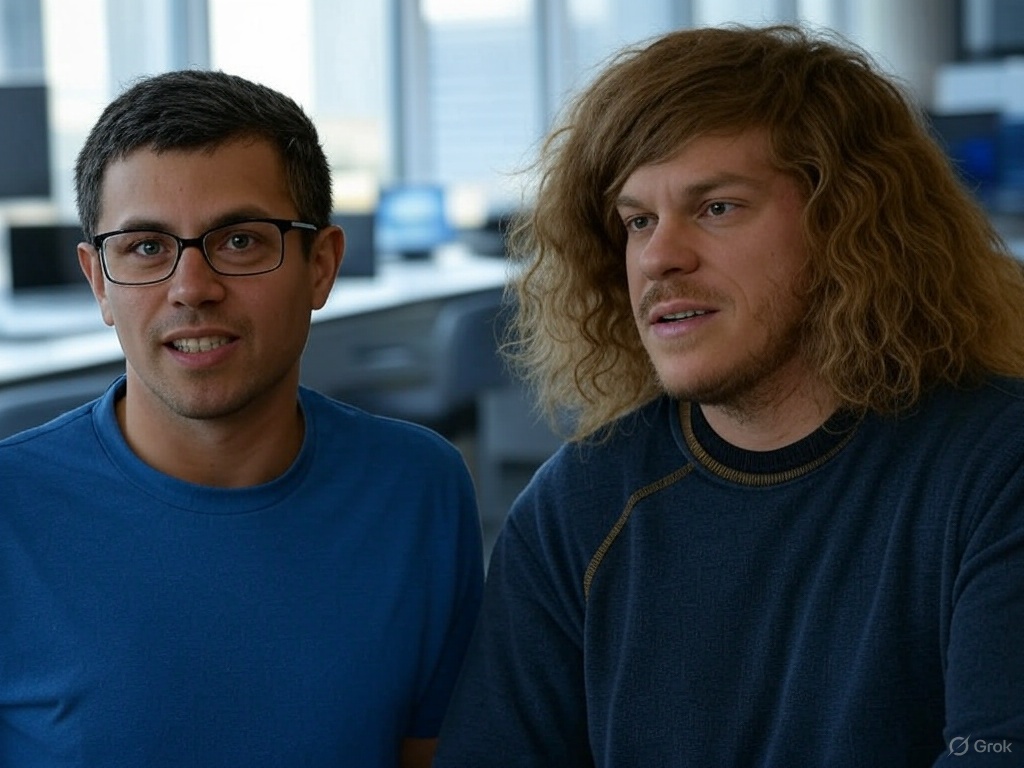Weight-Loss-Diet-App: How two teenagers built Cal AI to $8 Million ARR in months
They launched the weight-loss-diet-app through TikTok viral marketing and micro-influencer collaborations, achieving over 100,000 downloads.

Imagine this weight-loss-diet-app scene: A chilly morning dawns in a quiet suburban neighborhood.
In a modest kitchen, two young innovators—Zach Yadegari, a high school programming prodigy, and Blake Anderson, a recent college graduate well-versed in AI app development—sit together, fueled by a shared vision.
Their mission?
To simplify the cumbersome process of calorie tracking. Instead of a book, an app to lose weight!
Zach, having started programming at just seven years old, and Blake, with his extensive experience in app development, knew there had to be a better way.
They had both grappled with the frustrating task of manually entering calorie data into existing apps like MyFitnessPal. This shared pain point ignited the spark for Cal.AI, an app designed to revolutionize calorie tracking with the simplicity of a photograph.
They began by leveraging their technical skills, using high-level programming languages like Python and Node.js to build the initial version of Cal.AI.
This app integrated existing AI models, such as OpenAI's GPT systems, to accurately process food images. Within a few intense months, they had a working prototype.
But creating a game-changing app was just the beginning.
They needed to get it into the hands of users.
Enter TikTok, the viral playground of the internet. Zach and Blake crafted engaging, relatable content that showcased Cal.AI's unique features.
Their videos quickly caught fire, earning the app over 100,000 downloads.
Note they didn't rely on big-name influencers or costly ad campaigns—instead, they collaborated with micro-influencers whose smaller, yet highly engaged followings, helped build credibility and trust.
Very unusual to target low count influencers but a very interesting strategy!
Cal.AI's affordability further fueled its rapid growth.
Priced at just $10 per month or $30 per year, it offered an accessible solution for anyone looking to manage their diet more efficiently. This strategy fostered a large, loyal user base, driving word-of-mouth marketing.
Imagine $30 instead of $120 per year for a weight-loss-diet-app. Who wouldn't jump on this offer?
Continuous iteration was key to their success.
Zach and Blake listened to user feedback and rapidly refined the app, ensuring it met the needs of their growing community. They used tools like Superwall for optimizing paywalls and conducted frequent A/B testing to improve user experience.
From a simple idea in a suburban kitchen for a weight-loss-diet-app to an $8M ARR success story, Zach and Blake's journey with Cal.AI is a testament to the power of innovation, the importance of addressing real-world problems, and the impact of a relentless pursuit of excellence.
What did CalAI solve?
CalAI is an AI-powered calorie tracking app that simplifies weight management. It allows users to snap a photo of their meal or scan a barcode to get a nutritional breakdown, including calories, protein, carbs, and fat. The app is designed to be user-friendly, offering personalized plans based on lifestyle questions and goals.
It has received positive reviews for its innovative features, such as using AI to analyze food images and its ability to create tailored plans. However, its accuracy can vary, especially with foods that have hidden ingredients like smoothies or soups.
If you're considering using CalAI, it seems like a promising tool for quick and efficient calorie tracking.
Key Lessons Learned:
- Leverage Viral Marketing: TikTok and social media were instrumental in spreading the word.
- Solve Real Problems: Cal.AI addressed the genuine need for easier calorie tracking.
- Stay Lean and Agile: A small, efficient team can achieve great things.
- Iterate Quickly: Constant improvement based on user feedback is crucial.
- Affordable Pricing: Keeping prices accessible helped build a large user base.
Their story is a vivid reminder that with the right combination of innovation, dedication, and a clear understanding of your market, remarkable success is within reach.

Subscribe to my newsletter...
Your name and email will never be shared or sold. Your privacy is our number one priority.
1. Leverage Viral Marketing
TikTok and social media were the cornerstones of their growth strategy. By creating engaging and relatable content, they were able to reach a massive audience without relying on big-name influencers or expensive advertising campaigns.
2. Focus on Solving a Real Problem
Cal.AI addressed a genuine need: simplifying calorie tracking. By solving a real problem that resonated with many, they positioned their app in a lucrative niche.
3. Keep the Team Lean and Efficient
Their small, agile team of three allowed them to move quickly and efficiently, demonstrating that a compact team with clear roles and strong collaboration can achieve significant success.
4. Iterate Rapidly
The emphasis on quick iterations and trend discovery enabled them to innovate and adapt swiftly. By continuously refining their app based on user feedback and data-driven decisions, they ensured it met user needs efficiently.
5. Balance Pricing for Growth
Their affordable pricing strategy ($10/month or $30/year) helped increase user adoption while balancing revenue and growth. This low-cost model enabled them to attract a larger user base and fostered word-of-mouth marketing.
In summary, the duo's story highlights the importance of leveraging modern marketing tools, focusing on real-world problems, maintaining a lean team, iterating quickly, and adopting a balanced pricing strategy to achieve remarkable growth. Their experience is a testament to the power of innovative solutions and relentless pursuit of excellence.